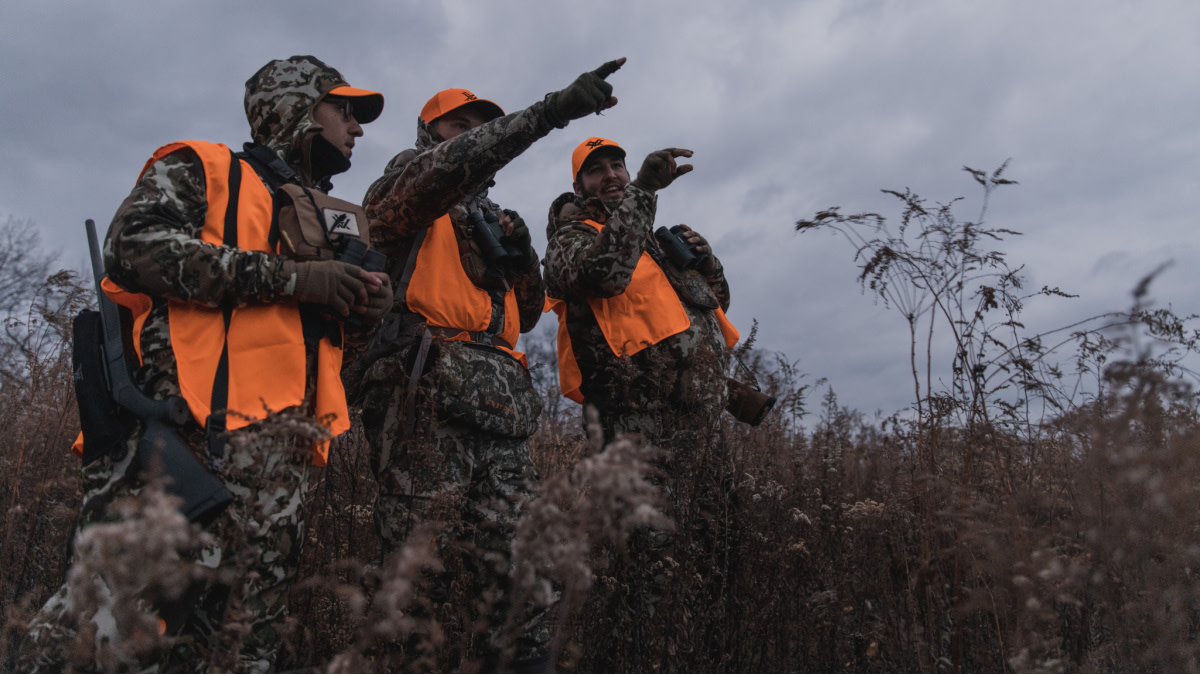
The thing about any kind of advice is that’s wholly dependent on countless individual variables, and the recipient’s willingness to even consider it. If anything is out of whack on either side, the advice is generally worthless.
Such is the case with much of the hunting wisdom that is often touted as fact-like, when it’s anything but. For example, how many times have you heard that deer don’t move when it’s too hot, too windy, or too rainy? Or about how you’ll never have a chance at a bull in an over-the-counter unit unless you hike five miles into the backcountry?
There are a lot of things hunters generally believe that just aren’t true. Or better put, they’re in a gray area rather than black or white. Randy Newberg is familiar with this reality.
“One that a lot of people tell me is that a .308 won’t kill elk because it’s too small, yet I’ve got a whole garage full of evidence to the contrary,” Newberg said. “The same goes for non-lead bullets, which are wrapped in conspiracy theories and suspicion, but perform unbelievably well on big game out of some of my rifles.”
Newberg added another to the list of Western misconceptions by saying that too many people believe they need to be long-range masters to hunt the mountains, which is patently absurd. He also admitted that one area that is fraught with misplaced beliefs involves high-quality, limited draw tags.
“People think that if they wait eight years, or 15, that the tag is going to be easy to fill,” Newberg said. “You still have to give effort that is commensurate to the license, and that’s not often talked about. We always hear that drawing a dream tag in a big-critter unit is the most important component to having a great hunt, but that’s just the start. You still have to work for it, and oftentimes, get a little lucky.”
There are plenty of examples you can find where steadfast Western hunting beliefs don’t consistently jive with an individual hunter’s reality, but it’s not just the backcountry roamers who deal with this. Whitetail hunters have been known to ride-or-die with their convictions, too.
Tyler Jones, host of The Element Podcast, is a dedicated public land bowhunter who had the season of a lifetime last fall on mature bucks. He says that he could rattle off plenty of things that hunters buy into that don’t apply to their situation, but high on his list is a hot topic in the deer world—buck bedding.
“Hunting buck beds is so popular now, but it’s really a regionally specific tactic at best,” Jones said. “A lot of the places I hunt, you can’t count on a buck using any specific bed with any level of consistency. Here in Texas, our hogs often push bucks out of the best bedding cover into fringe habitat. In other places I hunt, this inconsistency is heavily influenced by the number of hunters in the woods.”
This is a personal one of mine, as well. I know there are folks who excel at targeting buck beds and building a strategy around them, but those hunters are breathing some rarified air. They are also, usually, hunting an area they know very well and can devote a serious amount of time to scouting.
Hunting buck beds is one of the popular, hit-or-miss strategies that has embedded itself in the deer hunting zeitgeist, but it’s far from the only one. Jones admits that his podcast is very careful about how it presents successful hunts. He doesn’t want the audience to get a false impression of how hunting really is.
“If you consume hunting media today, you might have a skewed view on how easy it is to kill a buck on an out-of-state trip, even on public land,” Jones said. “But a lot of the best content out there is created by folks who have access to local knowledge, and often a team contributing to their efforts. There’s nothing wrong with that, but it’s a huge advantage that should be acknowledged.”
He’s right, of course. Just like when you watch a 187-inch buck walk into a food plot on a random hunting show, streaming a 20-minute YouTube film on killing a public land buck is, by its very nature, only a partial view of the hunt. Those films are some of our favorites and are fun to watch for a reason, but most hunters in those situations fail more times than they succeed.
This is why it’s important to pay attention to what you base your rock-solid hunting beliefs on. If you’ve bowhunted 20 years and have never seen a buck in daylight during a full-moon phase, work with that. If you’ve had better rifle hunts during unseasonably warm Novembers in a hunter-dense state, what does that mean? Does it mean that deer do actually get after the rut during hotter-than-average weather despite conventional wisdom? The answer is out there, and the deer will tell you. Or they have already told you.
Looking at it this way matters because we tend to want to simplify something as infinitely dynamic as hunting down to ‘always’ and ‘never’ categories. This makes decision making easier and sets clear directions to follow. Hunt all day during a full moon? Forget it. Snort-wheeze at a buck in September? Not a chance. Crawl into a bedded buck’s guard and shoot him while he’s zoned out? Not possible. Wait for late October to hunt mornings? Absolutely.
These types of beliefs, and many more, are everywhere and often originated with folks who don’t hunt anything like you do. To frame it up in an easy to understand way, this would be kind of like taking dating advice from Brad Pitt if you look like the average outdoor writer.
Different worlds. Different results.





Conversation